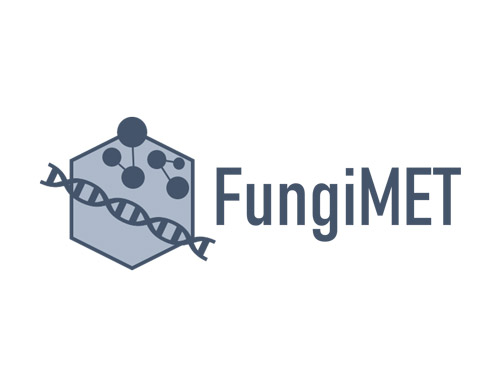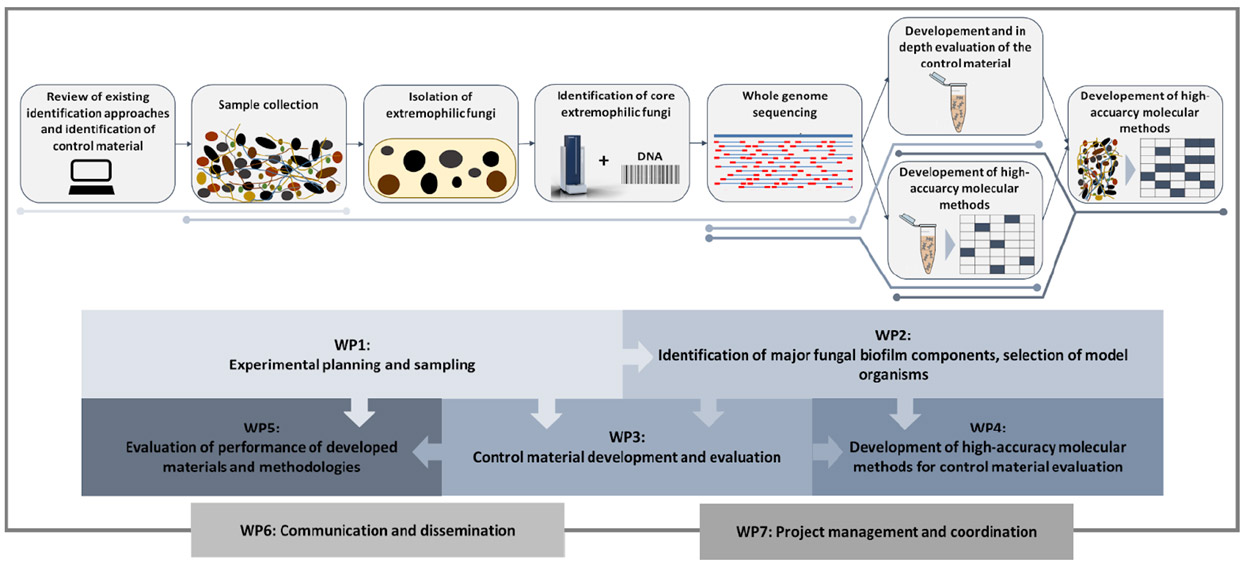Projects
The purpose of the investment project BTH-NIB is the assurance of the appropriate infrastructural conditions for the use of research and developmental opportunities in the fields of operation of the NIB.
Play Video About project Publication
FungiMET Metrology for Biofilm Identification in Extreme Environments: a case study of solar panel inhabiting fungi
Project coordinator: doc. dr. Mojca Milavec
Code: J2-50088
Duration: 1.10.2023 – 30.9.2026

Humanity's impact on Earth's environmental systems during the Anthropocene epoch has given rise to the introduction of novel entities and an elevated degree of complexity, primarily through the emergence of the technosphere. In many cases biosphere can have negative effects on the performance of technosphere. To keep pace with the multitude of emerging interactions of the technosphere with biosphere, there is an urgent need to study and measure these interactions by providing dedicated methods and collecting scientifically sound and quantitative data. By doing so, we can gain insight into the causal connections and devise innovative solutions to mitigate the effects. A prominent contributor to the technosphere is the booming photovoltaic (PV) market. Solar energy, a key player, has rapidly expanded in the European Union, with solar power production quadrupling over the last decade.
Policies such as the Renewable Energy Directive and the European Green Deal have set ambitious targets for renewable energy adoption in the EU. To meet these goals, maintaining PV module efficiency is essential. These modules are vulnerable to various environmental factors, including dust and subaerial biofilm (SAB) accumulation. SAB, dominated by fungal species, worsens module soiling and poses cleaning challenges. Current cleaning methods often prove inefficient or environmentally harmful. Identifying core SAB organisms and understanding their adhesion mechanisms is critical for developing eco-friendly solutions.
The adoption of PV technology has the potential to significantly reduce CO2 emissions, aligning with the EU Green Deal's climate neutrality target. Moreover, insights into biofilms could revolutionize the circular economy approach to renewable energy materials, creating more durable, low-maintenance materials that reduce pollution and contribute to a sustainable future.
The main objective of FungiMET is to develop and evaluate a reference measurement procedure, to support identification and detection of extremophilic fungi inhabiting PV, and to establish a guideline on development and evaluation of the procedure.
The specific objectives of this research project are:
- to identify the most common extremophilic fungi inhabiting PV and the most widely used targeted and non-targeted approaches for their identification and detection,
- to prepare and assess materials of different level of complexity (e.g. synthetic DNA, plasmids, genomic DNA, whole organisms) as control/reference material(s) with the special emphasis on their commutability in accordance to ISO 17034,
- to test the newly developed and assessed control/reference material on real-life samples, and finally
- to develop a metrologically underpinned quality assurance framework for development and characterisation of fit-for-purpose control material(s) and measurement procedure(s) for extremophilic fungi inhabiting PV.
A well-established reference measurement framework will contribute to the development of a unified strategy for monitoring biofilm formation on PV modules, support management and control, and ultimately help define measures to prevent biofilm formation on solar cells. The methods developed are universally applicable in all climates and on all continents and will support the spread of renewable energy not only in developed countries but also in developing countries.

Figure: Experimental overview. The project consists of eight main stages divided into five technical work packages, as well as two non-technical work packages focusing on project management and dissemination. The lines connecting specific stages indicate their correlation with the corresponding work package (the colour of the line corresponds to the WP).


 Scope of NIB's accreditation is given in the Annex to the accreditation certificate and in the List of accredited methods for detection of GMOs and microorganisms – plant pathogens
Scope of NIB's accreditation is given in the Annex to the accreditation certificate and in the List of accredited methods for detection of GMOs and microorganisms – plant pathogens 
